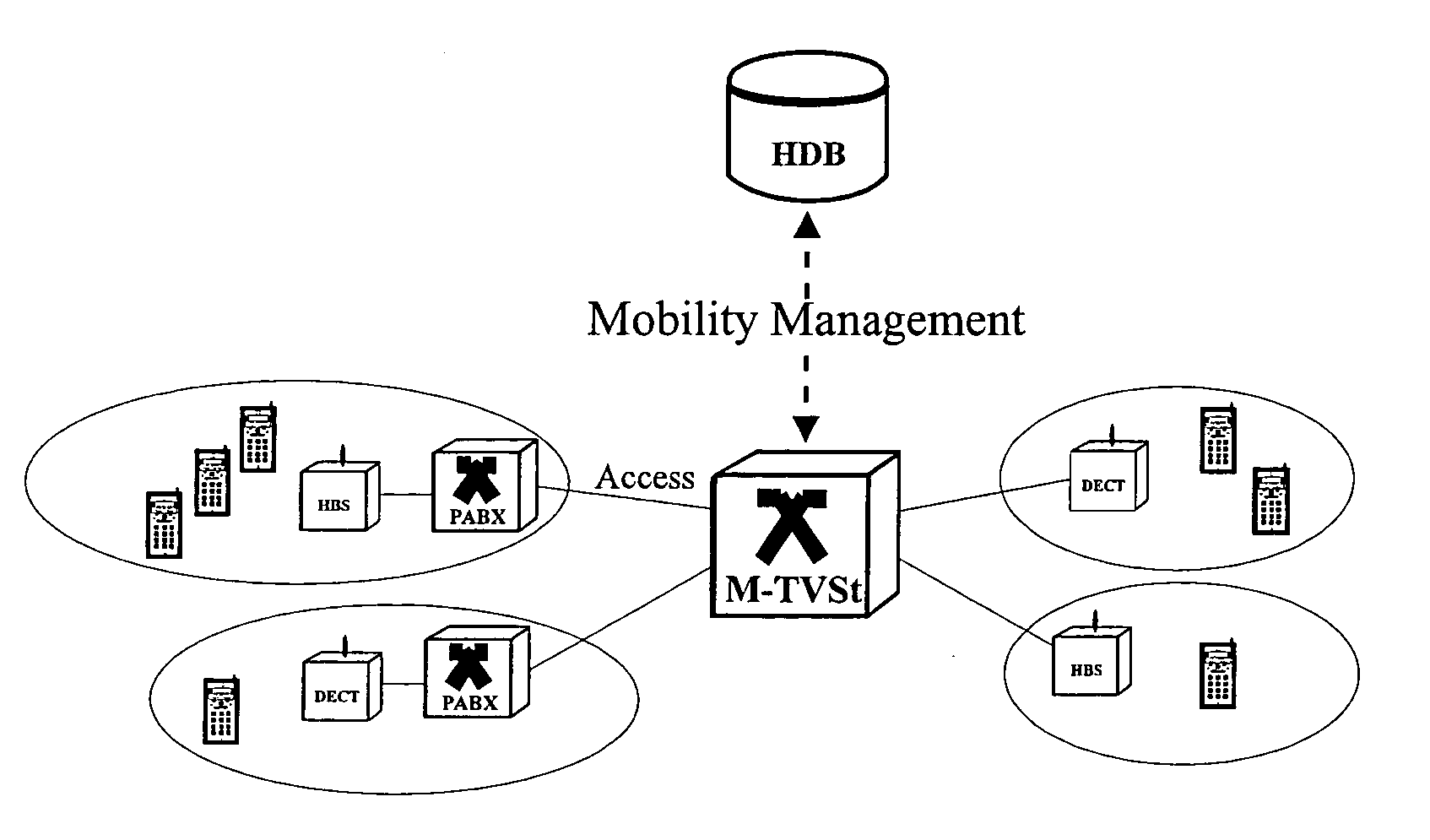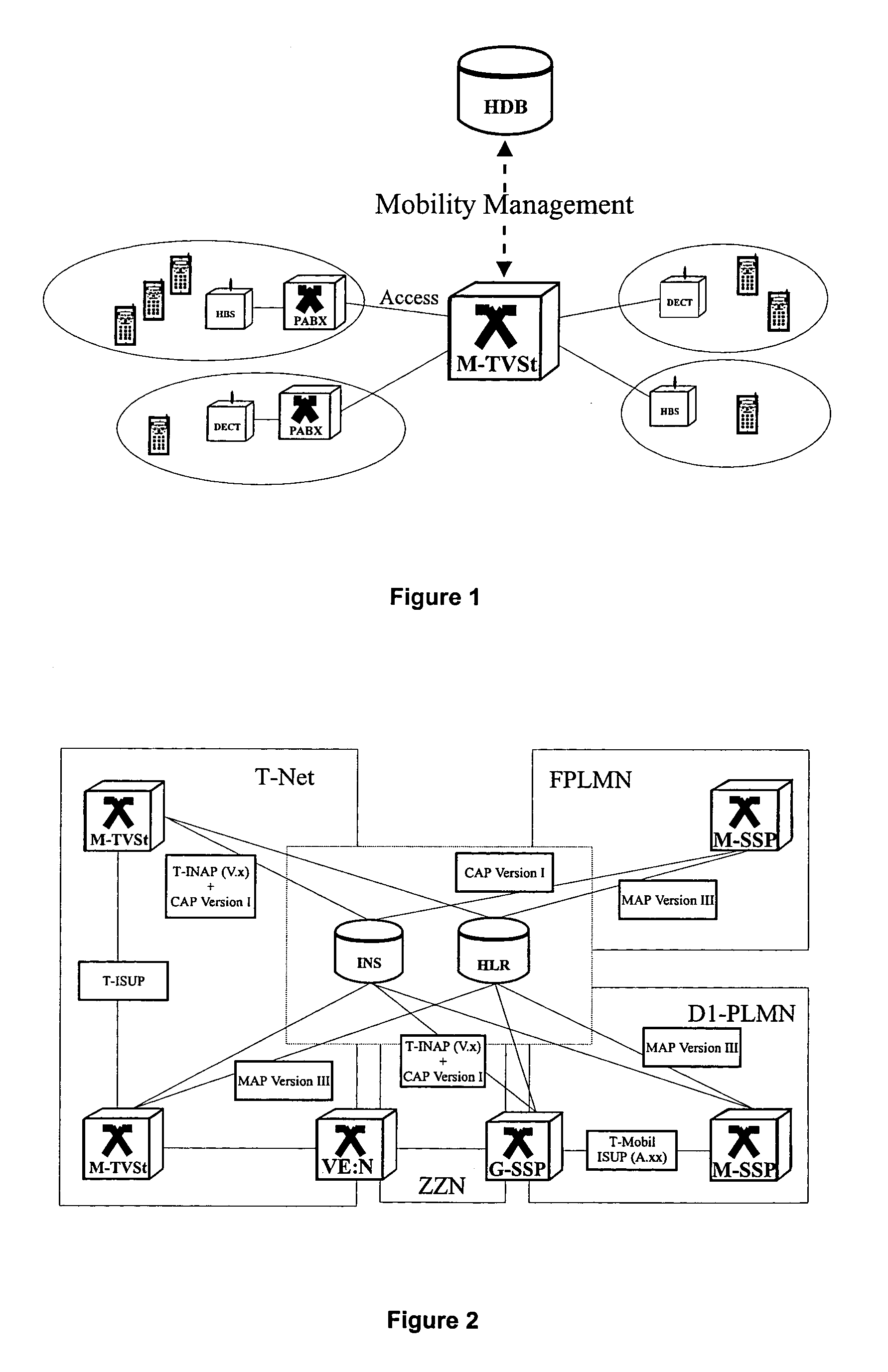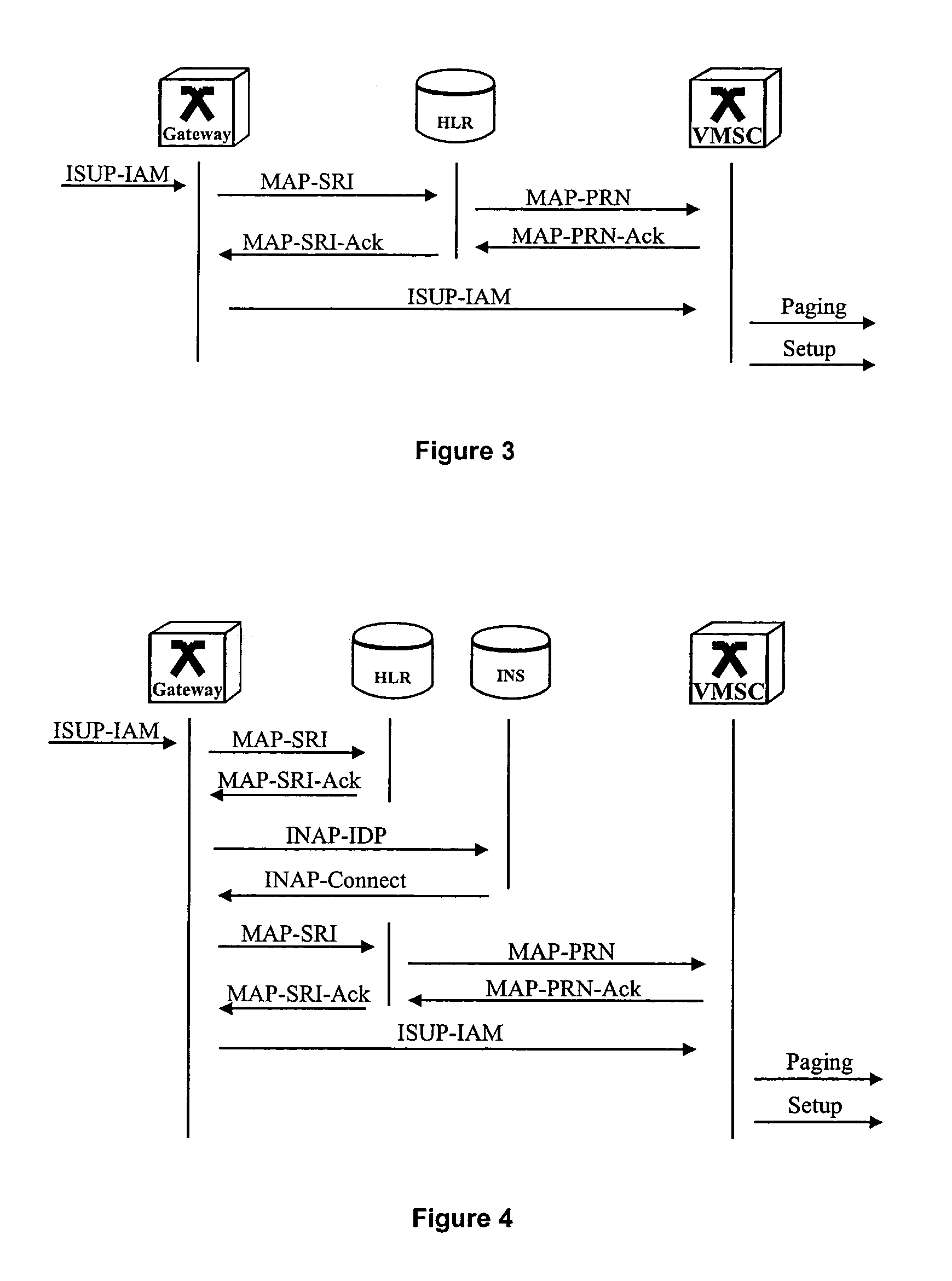Method and system for connecting subscribers participating in several telecommunication networks under one telephone number
a technology of telecommunication network and telephone number, which is applied in the direction of network data management, telephonic communication, automatic exchange, etc., can solve the problems of not being able to integrate not being able to affect the existing communication network, and not being able to provide actual integration of the wireline network into the mobility management of the mobile radio communication network, etc., to save connection charges, improve speech quality, and improve transmission ra
- Summary
- Abstract
- Description
- Claims
- Application Information
AI Technical Summary
Benefits of technology
Problems solved by technology
Method used
Image
Examples
first embodiment
[0035]In a first embodiment illustrated in FIG. 2, the home database HDB consists of an Intelligent Network System INS and a Home Location Register HLR. The nodes do not have to be coupled because they perform separate functions. The HLR is a central point for the mobility management and administers the subscriber profile for conventional ISDN / GSM services. Special services can be controlled through the INS. The required trigger points are optical components of the subscriber profiles.
[0036]A MAP implementation with interworking to the α-interface in the TVSt is necessary to convert the architecture.
[0037]The signaling data between the Intelligent Network System and the Home Location Register HLR and the mobile service switching points M-SSP as well as the wireline network local exchanges M-TVSt are transmitted through the MAP interface. The calls are connected and disconnected and the communication between the exchanges is executed via the ISUP.
[0038]The mobile radio telecommunicat...
fourth embodiment
[0188]According to the invention, as illustrated in FIG. 12, the HDB consists of a node with a Service Control Function (SCF) and a Home Location Function (HLF). The SCF assumes the entire communication to the exchanges of the base network (initially only TVSt, in a subsequent modification also the MSC function of the own network) and acts as a focal point for the mobility management. The HLF is responsible for adapting to the GSM interfaces (MAP). Both functions access a common database. The configuration requires a new development of the HDB.
[0189]Unlike the concept according to FIG. 7, the HDB is here combined in a network node. This eliminates communication between the INS and the HLR via a proprietary interface. This is particular advantageous in time-critical processes which have to be completed within predetermined acknowledge times. This situation arises in particular with respect to the acknowledgement of procedures of the HLR to the GSM network. Since the INS should always...
PUM
 Login to View More
Login to View More Abstract
Description
Claims
Application Information
 Login to View More
Login to View More - R&D
- Intellectual Property
- Life Sciences
- Materials
- Tech Scout
- Unparalleled Data Quality
- Higher Quality Content
- 60% Fewer Hallucinations
Browse by: Latest US Patents, China's latest patents, Technical Efficacy Thesaurus, Application Domain, Technology Topic, Popular Technical Reports.
© 2025 PatSnap. All rights reserved.Legal|Privacy policy|Modern Slavery Act Transparency Statement|Sitemap|About US| Contact US: help@patsnap.com



